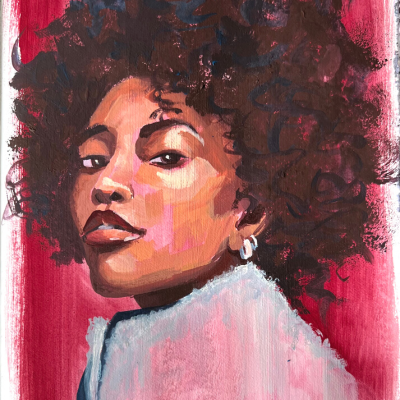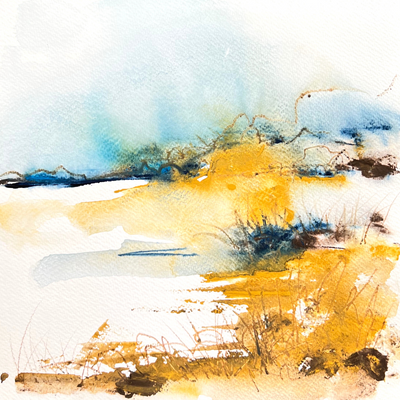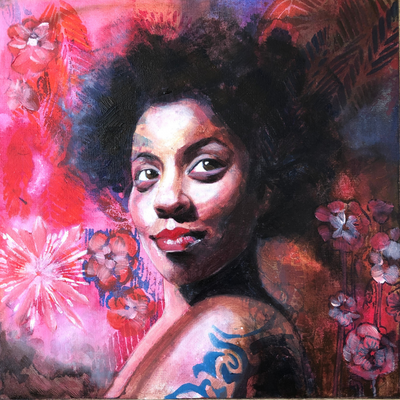What is the difference between gouache and Acrylic Gouache?
Acrylic gouache is a new medium that combines the best of gouache and acrylic. It has a matte finish and a polymer base and can be used like gouache and acrylic. It is a water-soluble emulsion, which you can use in various ways. You can apply it with a brush or a palette knife and mix it with other mediums to create unique effects.
The main difference with traditional gouache is that acrylic gouache is waterproof and cannot be reactivated. It has its pros and cons.
Acrylic gouache is an opaque polymer-based paint.
Acrylic gouache is a polymer-based paint that is opaque. Acrylic gouache also goes by “acryla gouache”, depending on the brand. So it would be more accurate to call it matte acrylic than acrylic gouache. Acrylic g, and it.
It can be thick, directly from the tube, or thinned with water to make washes—all you can do with regular acrylic you can do with acrylic gouache.
Acrylic gouache can be diluted.
You can dilute acrylic gouache to make it more transparent. You can also add a medium to change its consistency and increase or decrease the paint’s ability to spread out on the canvas. Look for acrylic mediums, and you’ll get a ton of creative possibilities!
Acrylic gouache has a matte finish.
Acrylic gouache has a matte finish, like traditional gouache. But it’s still acrylic paint with a soft texture and rich pigmentation, making it easy to blend.
Traditional acrylic has a slight shine. You can still apply a matte varnish if you want the matte finish on conventional acrylic.
Acrylic gouache dries quickly on the palette.
Acrylic gouache dries quickly when using it on a regular palette. You could waste a lot of paint; once dry, you cannot reactivate it, and you’ll have to throw it away.
To prevent this, you can use a stay-wet palette that will keep your paint moisturized and fresh for a long time. Traditional gouache dries quickly as well, but unlike acrylic gouache, you can reactivate it with water, so you don’t lose your paint, and you can store traditional gouache in an airtight palette to prevent it from drying.
Don’t forget to clean your brushes immediately after your painting session, or you won’t be able to get them back. You can clean the brushes by using a brush cleaner or soap and water.
Add a medium to acrylic gouache to extend the drying time.
You can add a medium to acrylic gouache to extend the drying time. Use an acrylic matte medium to keep your gouache from having a glossy finish. Using this medium will allow you to blend the colors for a more extended time. You’ll get close to oil painting techniques with this retarder medium.
I wouldn’t use this polymer-based medium with traditional gouache, as you may risk some unexpected chemical reactions on your finished painting.
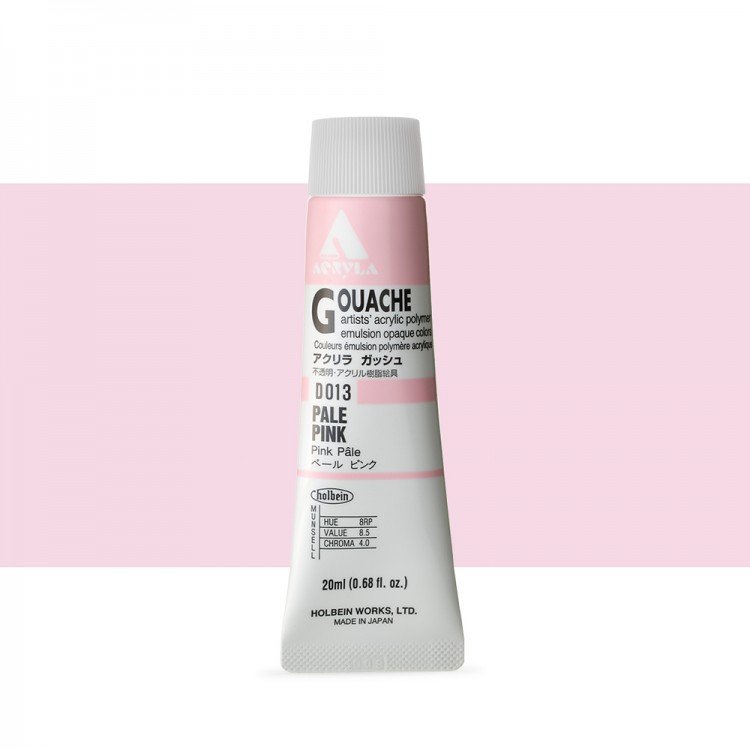
Acrylic gouache doesn’t crackle on the paper when dry.
Acrylic gouache is a water-soluble paint that uses acrylic polymer as its binder. It’s less prone to cracking than traditional gouache with thick applications, like the impasto technique. Gouache paint uses gum arabic or other natural binders, which can crackle when used too thickly.
Acrylic gouache is waterproof.
The most significant difference between acrylic gouache and traditional gouache is waterproof. Acrylic gouache can be applied to metal, wood, and other materials that are difficult to work with. Once dry, the paint cannot be reactivated by water or anything else; you must cover it with fresh paint.
Essentially this means that once you’ve painted something with acrylic gouache, there is no going back!
You can easily layer with acrylic gouache.
You can layer acrylic gouache to create beautiful effects. Once the previous layer is dry, you can add more on top of it without reactivating the paint. You can create layers of color and texture without lifting the color below.
Layering with traditional gouache can be more difficult, as you must be careful not to reactivate the layer below.
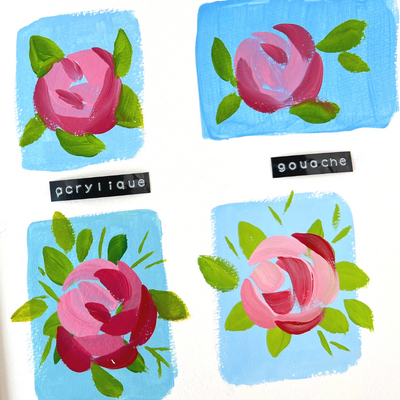
You can mix acrylic gouache with traditional acrylic.
You can also mix the acrylic gouache with traditional acrylic paints to achieve various colors. If you want to keep the matte finish of acrylic gouache, use a matte medium during the painting process, or apply a matte varnish at the end.
I wouldn’t advise you to add traditional gouache and acrylic gouache in the same mix. The bases are not the same, and you may get unexpected results. Plus, this might compromise durability. You can experiment with that in your sketchbook, but not on a piece you plan to sell.
Traditional gouache can be applied on top of acrylic gouache.
Using acrylic gouache as a background or first layers is excellent, as you cannot reactivate it. You can then apply the traditional gouache to build your layers. Both have the same matte finish; it’s impossible to tell once the painting is finished.
Conclusion
As you can see, acrylic gouache is not gouache; it’s acrylic. I guess it’s marketing more than the absolute need for a new medium. Acrylic gouache is more expensive than the regular one. So it’s worth comparing prices and buying a matte varnish to achieve the same look. Plus, with standard acrylic, you’ll get larger tubes!
You can watch my full review on YouTube here:

